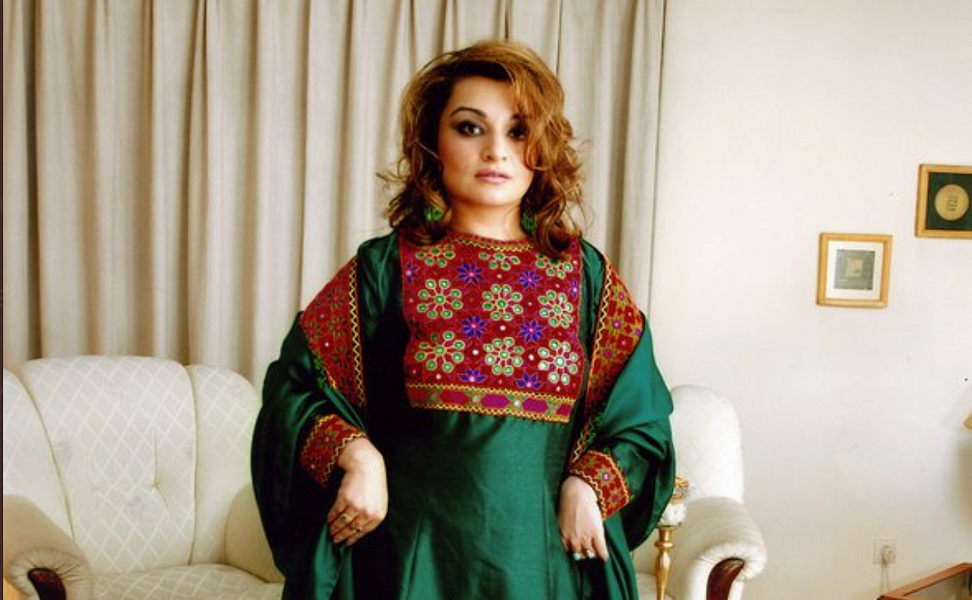When the Taliban first imposed its vision for Afghanistan’s cultural and political landscape between 1996 and 2001, the country’s women were subjected to wide-ranging forms of gender-based hardships. In addition to policies—like mandatory burqas, education bans, and forced isolation— designed to expel 50 percent of the population from the public eye and positions of power, Afghan women suffered rampant sexual assault, the very thing the former decrees ostensibly protected against.
With the fall of Kabul and the Taliban’s formation of an all-male “interim” government, the jihadist group’s treatment of women will serve as a bellwether for human rights in occupied Afghanistan.
It’s not looking promising. Early reports of widespread rape and abductions by the Taliban emerged as its fighters swept the country this summer, and now, Afghan women appear to be trading in their Western garb and traditional attire for head-to-toe black gowns, either under direct threat from the Taliban or anticipation of it.
On September 5, the Taliban’s education authority issued a decree requiring all women attending university to don a full abaya and niqab, a black veil with only a thin slit through which eyes can be seen. The same order further mandated that female students be taught only by other women, or, in their absence, “elderly men” of good character—a condition expected to severely curtail access to secondary education for Afghan women.
To be sure, many women haven’t taken the Taliban’s denigration of Afghanistan’s social and cultural status quo lying down. In recent weeks, Afghan women have marched through the streets (often sporting colorful garb) to protest Taliban rule in provinces across the country. Demonstrations persist, despite crackdowns by Taliban fighters wielding whips, batons, and rifles.
Hordes of “pro-Taliban” women in black burqas, a veil that entirely obscures the face and body, staged their own demonstration on September 11 in an event widely believed to have been orchestrated by the Taliban. For Dr. Bahar Jalali, an Afghan-American and historian, this effort to distort the Afghan people’s relationship with their own material culture was the final straw—and the event that inspired her to launch the #DoNotTouchMyClothes Twitter campaign to bring international awareness to the plight of Afghan women under Taliban rule.
“I know how powerful images are, and I didn’t want the world to think that this was representative of Afghan culture, Afghan clothing, Afghan identity,” Jalali said in an interview with The Dispatch. “So I uploaded a photo of myself in traditional Afghan dress onto Twitter and I made an appeal for Afghan women worldwide to please do the same. Social media can be very powerful, as we saw. The least we can do is try to inform the world about who we really are, because our identity has been hijacked.”
In the two weeks since Jalali first shared a picture of herself, donning a garment handcrafted for her first wedding, hundreds of Afghan women and girls have taken to Twitter to flaunt their vibrant cultural heritage.
The traditional attire, like the cultural and ethnic makeup of Afghanistan, is diverse. But most of the garments share key elements, like elaborate embroidery, exuberant color, and intricate embellishments. They are often worn with scarves and, though many feature head coverings, their keepers’ faces and hair are typically visible and equally adorned. “The skirts are meant for girls to twirl in and to dance in and to be animated and celebrate life,” Jalali said.
For this reason, the extravagant dresses are most often worn at important milestones, like weddings. After the disintegration of her first marriage, Jalali said, she mulled over whether to keep the garment featured in her tweet, but ultimately decided to honor the work and heritage that went into crafting it. “The creation of that dress involved multiple actors and it symbolized an important milestone in my life,” she said. “I’m a historian and this dress is part of my history, good or bad.”
To other Afghan women, the clothing serves as a reverent reminder of a painful collective history. “Traditional clothing tells you stories of where a person is from, and the struggles and hard work that that person’s culture and ancestors have gone through,” Homira Rezai, a Hazara woman and chair of a U.K.-based nonprofit, told The Dispatch. “The hand embroidery is something that has been passed through generations, usually it’s the mother that teaches her daughters. That kind of dress takes at least two months to make, but because of the value it has in our culture, we still invest time and we wear it with a lot of pride.”
Yesterday and today, Rezai added, Hazara men and women are harnessing the power of social media to draw attention to their plight, using the hashtag #HazaraBlackDay in remembrance of a 19th century campaign by Emir of Afghanistan Abdur Rahman Khan to destroy the ethnic group. An estimated 60 percent of the country’s Hazaras were killed, and others fled or were taken as slaves in the aftermath. Afghanistan’s enslavement of the Hazaras was not abolished until 1923.
As the country’s third-largest ethnic group, Hazaras also face heightened threat under Taliban rule. In 1998, Taliban fighters went on a “killing frenzy” in Mazar-i-Sharif, targeting Hazara combatants and civilians alike and leaving at least 2,000 people dead. Attacks on Hazara communities continued under the Taliban’s insurgency, and preliminary reports out of Taliban-controlled Afghanistan indicate that the group intends to pursue a similar policy following its takeover.
To Hazaras and other Afghan ethnic groups, Rezai said, “the black niqab is completely alien… The only time we wear black is when we go to funerals.”
Jalali, who wrote her PhD thesis on Afghanistan, added that the Taliban-imposed dress code, like the terrorist organization itself, is “utterly un-Afghan.”
“The Taliban represents a jihadi, Islamist, Islamic fundamentalist, extremist, radical culture that is totally at odds with Afghan traditional culture,” Jalali said. “One of the aims of the Taliban is to dilute so as to destroy Afghan identity and cultural heritage. By abandoning Afghanistan to this regime, I’m afraid that the international community has paved the way for the destruction of Afghan culture.”
In a country where women now face the deprivation of their most basic rights, the contrast between vibrant traditional attire and the cloaked specter of a niqab mandate offers a jarring visual representation of what’s really at stake.
“I don’t think a lot of us genuinely recognize the weight that the simple act of taking away their right to choose clothing has on the overall mentality of women in Afghanistan,” Rezai said. “It will take away each and every dream and hope they have for their daughters and for future generations.”







Please note that we at The Dispatch hold ourselves, our work, and our commenters to a higher standard than other places on the internet. We welcome comments that foster genuine debate or discussion—including comments critical of us or our work—but responses that include ad hominem attacks on fellow Dispatch members or are intended to stoke fear and anger may be moderated.
With your membership, you only have the ability to comment on The Morning Dispatch articles. Consider upgrading to join the conversation everywhere.